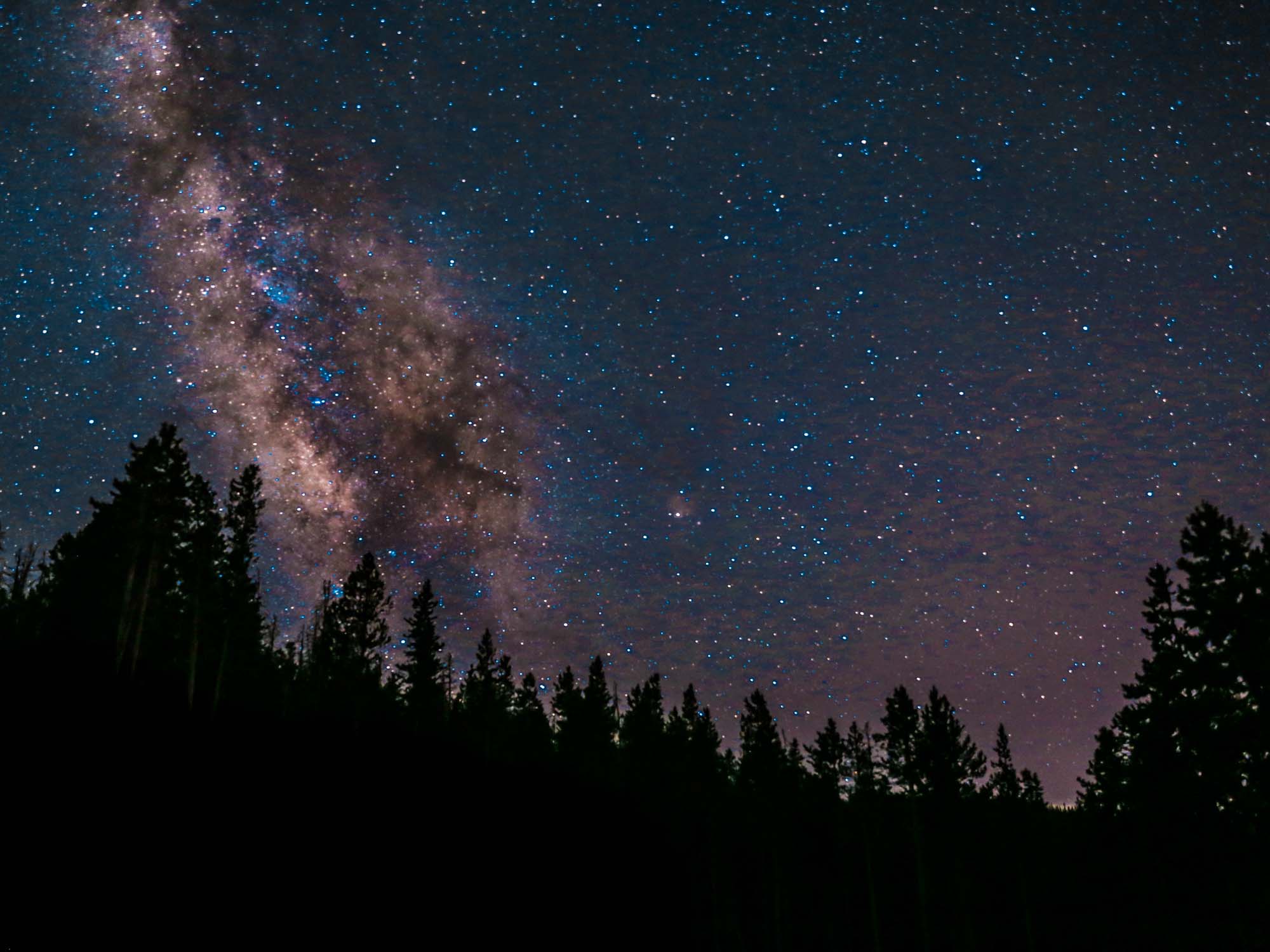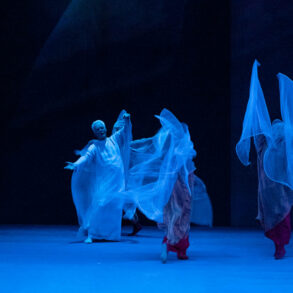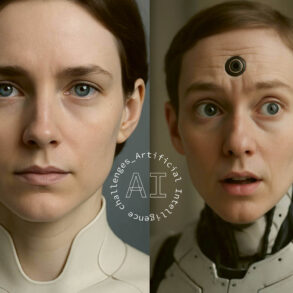Charged with a significant task by the first head of the Mathematics and Astronomy section, Elisabeth Vreede, Willi Sucher devoted his life to the development of astrosophy—a new star wisdom born out of anthroposophy. Jonathan Hilton, a student of Sucher, writes about Sucher’s biography and offers introductory ideas from Sucher’s astrosophy in his new book Speaking to the Stars. The following are excerpts from the book, which was published by SteinerBooks this summer.

At the beginning of this century, Rudolf Steiner began to speak of a new way of knowing spiritual realities, which he called anthroposophy, wisdom reborn through the human being. Until his death in 1925, he brought to humanity the means for renewal through the cultivation of a modern spiritual science applied to a wide range of practical spheres of life, including education, medicine, agriculture, the arts, and social forms. Behind these areas of applied anthroposophy stands an all-embracing wisdom of the relation of the human being to the cosmic world in the past, present, and future. Many individuals experienced Rudolf Steiner and were inspired to take up one area to develop as a life task.
One of these individuals was Willi Sucher, who as a young man heard Steiner speak. Sucher was especially inspired by Steiner’s vision of the new growing relationship of the human being to the cosmic world, that of co-creator with the divine beings. Steiner called for this relationship to become more and more of a reality, and Sucher picked up the challenge and devoted his life to the task of developing a new wisdom of the stars, astrosophy, that would recognize this new role of the human being in earth evolution.
Willi Sucher was born on August 21, 1902, in the southern German town of Karlsruhe to a young bookkeeper and his wife. His earliest memories were of the death of his mother when he was four. This great loss marked the beginning of a childhood in which he experienced himself as the unwanted stepchild. … He would later characterize his childhood as always being “just one too many,” but he saw in this a positive force in his life that served to build inner strength and perseverance in the face of hardship.
In 1918, at the age of 16, Willi decided to make himself independent. He saw that his original hope of becoming an architect was impossible due to his financial circumstances, so he applied to become an apprentice in a bank. He was accepted and began the two-and-a-half-year training. He did not like it, but he would continue in this profession for 21 years. He often pointed out how through this work he learned rigorous attention to detail and accuracy in calculation. This mathematical training would serve him well later in his real life’s work. In 1919, Willi came into contact with the ideas of Rudolf Steiner. His uncle Karl, with whom he had kept in touch, had heard Rudolf Steiner lecture and spoke to Willi about him. Willi recognized immediately that these ideas would become his path in life and soon applied for membership in the Anthroposophical Society. However, he was told he must wait another year until he was 18. His uncle Karl also spoke with him about astrology, expressing his concern about its unsuitability for modern humanity. Willi recalled one such conversation in which his uncle spoke of how important it would be that someday an anthroposophist would bring new light to the entire field of astrology through the insights of spiritual science. His response was, “Why should we wait? Can’t we do it ourselves?” He was 18 years old, the time of his first moon node return. He then began to read the literature on astrology in an effort to understand it, only to turn away from it time and again, repelled by its determinism, which he felt degraded the true dignity of the human being …
The year 1927 was a significant year in Willi’s life, not only due to his marriage but for another reason as well. He came across the report of a lecture given by Dr. Elisabeth Vreede, the head of the Mathematical-Astronomical Section of the School for Spiritual Science at the Goetheanum in Dornach, Switzerland, where the Anthroposophical Society was centered. (Dr. Vreede had first met Rudolf Steiner in 1903 when she was a member of the Theosophical Society. She became one among the groups of individuals who worked with Steiner in developing the Anthroposophical Society, moving with him from Berlin to Dornach in 1917 to help build the first Goetheanum. She was an original member of the Vorstand of the Society and was appointed head of the Mathematical-Astronomical Section by Steiner.) In this lecture, Dr. Vreede referred to remarks by Rudolf Steiner about the configurations of the heavens at the time of the passing over of a human being into the spiritual world at death. Looking back at this moment 42 years later, Willi wrote:
This picture struck home like lightning. Here arose a perspective which no longer depicted the human being as a helpless object of the rhythms and movements of the stars. It was the soul of man which meant something for the stars; they were even waiting for that which he had to bring them as the fruits of his earth-experiences. A ray of hope which seemed to shed light on man’s quest for spiritual freedom fell on the complex of astrology. Subsequent researches—just on the basis of the mathematics of planetary rhythms—fully confirmed that hope. Indeed, the biographical rhythms of a great number of historic personalities proved to coincide perfectly with the configurations of the heavens at the moment of their passing over. The experience that man was not only a creature but was on the road to becoming a cooperator even with the cosmos shaped itself increasingly. This gave hope that similar constructive views might eventually be found with regard to man’s association with the stars at the moment of his incarnation. Later discoveries proved that this was no vain hope.
Now his studies took on an ever-deepening intensity. At that time he was studying the biography of Tolstoy. He worked out the configurations of the heavens at the time of Tolstoy’s death and after careful deliberations sent this star picture, along with some very tentative suggestions, to Dr. Vreede in Dornach. She responded, as Willi would later say, “very positively” and invited him to Dornach the week after Easter 1928. Willi was then 25 years old. Dr. Vreede, as part of her task as leader of the Mathematical-Astronomical Section at that time, was giving lectures and courses, and between 1927 and 1930, she published 42 letters on the theme “Astronomy and Anthroposophy” (revised and published in book form in 1980 by the Philosophisch-Anthroposophischer Verlag at the Goetheanum). Her research found an eager pupil in Willi, and this became the starting point for a working relationship that would develop over the next ten years, during which Dr. Vreede gave Willi encouragement and challenges to further develop the work she had begun. Willi often described how Dr. Vreede would send him a statement by Steiner on something about the relation of the human being to the cosmos with the command, “I cannot do it. You must do it!”…
As Willi’s work continued, conditions in Germany were becoming increasingly difficult with Hitler’s rise to power. Willi and his wife realized they would not be able to continue their work in this environment. His correspondence with Dr. Vreede had been intercepted, and astrologers in Germany were being arrested. Anthroposophists had to meet secretly in small groups …
In 1936, Willi was again in Dornach visiting Dr. Vreede, after her expulsion from the Vorstand along with her colleague Ita Wegman and other original members. It was through her efforts after this visit that he was invited in 1937 to lecture in Holland and then in England at the Rudolf Steiner House in London, where George Adams translated his lectures. During this visit to England, Willi and Helen actively looked for opportunities to leave Germany. He spoke with his friend Eugen Kolisko, who introduced him to Fried Geuter, the co-founder of Sunfield Home, an anthroposophical home for handicapped children at Clent. Geuter said, “Mr. Sucher, come to us and I shall build you an observatory!” … After several months, just after Easter 1938, the necessary papers were obtained, and the Suchers left their homeland for England on what was officially considered a “visit,” with only 20 marks and a few personal belongings. They would not return to live in Germany again. Willi was 35 years old.
So after 20 years of working in banks, Willi was plunged into working in a nursery with severely handicapped children, while Helen worked in the kitchen. … Here Willi gathered the clinical experience which he would later unite with Steiner’s indications—to develop the idea that a dedicated staff, working with a deep knowledge of a child’s star configuration, could effect healing. In describing such work, he said, “Often we would work deep into the night, and the next day the child was a different being.” Of this time he also said, “So you see, it really was an ‘observatory’ … of the cosmic influences on human destiny!” …
In the November 1970 letter, he wrote of his life work since first reading the article by Dr. Vreede:
It is now 42 years since this lightning-storm happened, and ever since I have been enabled to carry on this research. Sometimes external circumstances were difficult, but there seemed always to be a helping hand in the background, which often arranged things forcefully in order to facilitate the work. As I said before, the road was never easy; suspicion and distrust acted as forceful breaks. One can fully understand this if one views the grave dangers which beset the road right and left toward a new, constructive astrology. Human egotism is all too easily inclined to misuse this knowledge in ignorance and dilettantism. All throughout the years the shining beacon of Rudolf Steiner’s wisdom was an unceasing encouragement and also a consolation when distrust led to direct attack. There is, particularly, one passage in Rudolf Steiner’s lecture cycle Christ and the Spiritual World (28 Dec. 1913 to 2 Jan. 1914) which I should like to quote: “It became clearer and clearer to me, as the outcome of many years of research, that in our epoch there is really something like a resurrection of the astrology of the third epoch (the Egypto-Chaldean civilizations), but permeated with the Christ Impulse. Today we must search among the stars in a way different from the old ways, but the stellar script must once more become something that speaks to us.” (Lecture V, Jan. 1, 1914). On such foundations the work was carried forward. Eventually other friends joined in as best they could. The guiding beacon was an unceasing sense of responsibility to lay the groundwork for an astrology which clearly and scientifically recognized man’s connection with the stars and yet fully respected the domain of his spiritual freedom and dignity. …
Willi repeatedly referred to Steiner’s lecture of October 10, 1919, “Cosmogony, Freedom, and Altruism,” in which Steiner outlined the tasks for different parts of the world and pointed to the imperative need for a new cosmogony to arise in America. Willi recognized the importance of this work for Americans to awaken, in a realistic way, to their citizenship in the cosmos. Fittingly, he gave his last lecture, at 82, just two months before his death, to the American Studies class at Rudolf Steiner College in Fair Oaks, California, where he often taught. It was on the Christ Events in relation to the founding of America in 1776.

Introduction to Astrosophy
Astrosophy, or Star (Astro) Wisdom (Sophia), is the spiritual scientific understanding of our new and enhanced relationship to the world of the stars. Rudolf Steiner spoke of the visible stars, as the physical manifestation of a complex and exalted world of spiritual beings who, in the past, helped to shape and guide humanity in its evolution. In ancient times, we were far more conscious of these spiritual beings and their guidance as can be seen in the pantheon of gods described in many ancient religions. As part of the greater divine plan for humanity, this awareness of the guiding beings was gradually lost as we became more conscious of the material world of the senses and less aware of the world of spiritual beings. …
During this gradual descent into earthly consciousness, human beings were not left totally without guidance. Mystery schools and temples were maintained in which select pupils were specially trained and led on a path of initiation. Some of these mystery traditions can be seen in the ancient cultures of Persia, Egypt, and Greece for example. In very early times, the “Kings” were all also initiates and therefore were able to lead their people out of a knowledge of the world of the gods. These initiates were able to understand the heavenly Beings who revealed themselves through the movements of the stars in order to guide them. Thus they had a knowledge of the time-rhythms of the planetary spheres within the fixed stars, as the “speech”, so to speak, of the heavenly beings guiding humanity. This knowledge extended not only to matters concerning daily life but also to the greater processes of ages of time. With this understanding, the initiates could know the timing of important future happenings. For example, the three Magi (or Kings) who went to Bethlehem were such Initiates who knew that the child born there was the incarnation of a great initiate who would also become the bearer of the Christ.
This once direct and grand star wisdom (astrosophy) was gradually replaced with a more mathematical and mechanical star knowledge, bereft of direct vision, which became what we know as astrology (astro=star, logy=logic). As human individuality became more ego-centric, star knowledge shifted from awareness of the larger forces at work in the world and the guidance of humanity to a more personal focus on individual destiny. Out of this, the personal astrology chart came into being. The ability to reach “behind” the angular relationships and planetary rhythms to the beings which these reflected was lost as humanity descended further toward a purely sense-bound science. The use of the personal asterogram as a tool to forecast personal destiny contained only a dim memory of the great truths behind the relation of the stars to human destiny.
Yet the great paradox is that the loss of the direct spiritual perception of the gods was necessary in evolution so that human beings could fulfill their great task in world evolution. According to Rudolf Steiner, this task is that we become the beings of freedom and of love that is born out of that freedom. This means that the experience of separation from the divine, unique to humanity among all beings, has the possibility, not the predetermination, to establish something new in the cosmos: a rank of beings who freely choose to participate with the divine plan out of a love born from that freedom. To learn this, humanity must traverse a long evolutionary path that descends into isolation and separation from the world of the spirit and then they must struggle to find their own way back, in freedom, to a relationship with the gods. …
The core of what was revealed by Rudolf Steiner was the knowledge of the turning point in world evolution that would give human beings this power to find their own renewed, free relationship to the divine world and in this freedom learn the true meaning of love. This turning point was the world-changing event of the deed of Christ: His death and resurrection. In that deed, Christ united with the Earth and with humanity, imparting the power to find our way back to the divine world. Within this context, Steiner addressed the need for a new “Christianized” cosmology. What does this mean? During the time that Christ walked on the Earth, He performed many deeds of which we only begin to glimpse the full meaning. These deeds were not only earthly “miracles” but they were also archetypal deeds that brought new meaning to the cosmological rhythms, thus giving birth to a new relationship of the human being to the cosmos. This relationship is new because humanity will then not be children, led by a “father” but rather will be conscious partners with the gods. Christ came to be the brother of humanity and through His deeds, each human being is capable of becoming a brother/sister to the gods. This new relationship to the divine is not one ruled from above by the law but one that has come through truth and grace. Therefore the new astrosophy is not one that seeks answers and guidance from the stars for what we should do; but rather it is one in which we learn to give back to the world of the stars the gifts that humanity has to offer in order to create the new cosmos, the “New Jerusalem” described in the book of Revelation in the New Testament. Christ’s deeds, as seen in relation to the starry movements, serve as models for us. The ground-breaking work of Willi Sucher, in his life’s work of building the understanding of the deeds of Christ in relation to the movements of the stars, can serve as a foundation for the greater work of creating a new Astrosophy: a star wisdom in which ‘we’ speak to the stars, uniting consciously with the Christ Will at work in the cosmos in order to fulfill our evolutionary task as independent, self-transformed, self-conscious individuals.
Title image Starry sky, Photo: Cassie Boca










Does anyone know where the lecture by Willi Sucher is available that is retired to as being given in Fair Oaks Ca USA to the American Studies class at Rudolf Steiner College in Fair Oaks, California, where he often taught. It was on the Christ Events in relation to the founding of America in 1776 ?